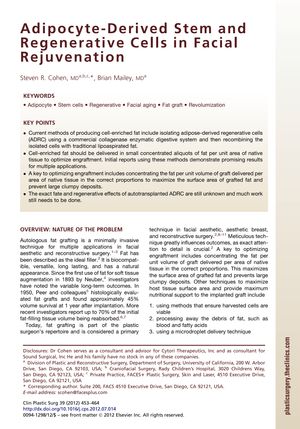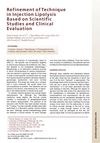Adipocyte-Derived Stem and Regenerative Cells in Facial Rejuvenation
October 2012
in “
Clinics in Plastic Surgery
”

TLDR Adding stem cells to fat grafts for facial rejuvenation might improve outcomes, but more research is needed to confirm safety and effectiveness.
The document from 2012 explores the use of adipocyte-derived regenerative cells (ADRCs) in facial rejuvenation, particularly in autologous fat grafting for aesthetic and reconstructive facial surgery. It highlights the historical variability in fat graft survival, with about 45% volume survival at one year, and discusses methods to improve outcomes, such as concentrating the fat and microdroplet delivery techniques. Initial reports suggest that higher ADRC counts may increase fat survival, especially in challenging conditions like radiation wounds. However, there is skepticism and limited scientific evidence regarding the safety and efficacy of ADRCs. The document calls for more research to establish the safety and clinical significance of adding stem cells to fat grafts. It also mentions a prospective study by Steriodimas et al. involving 20 patients, which indicated that ADRC-enriched fat grafts might require fewer reoperations and provide better initial satisfaction compared to conventional fat grafts. The document also notes anecdotal evidence of ADRCs improving hair growth in women with androgenetic alopecia and mentions the RESTORE-2 trial, which reported improvements in breast defects with ADRC-enriched fat grafts. Despite the therapeutic potential of ADRCs, the document concludes that more studies are needed to confirm their benefits and address concerns about their role in promoting cancer.


